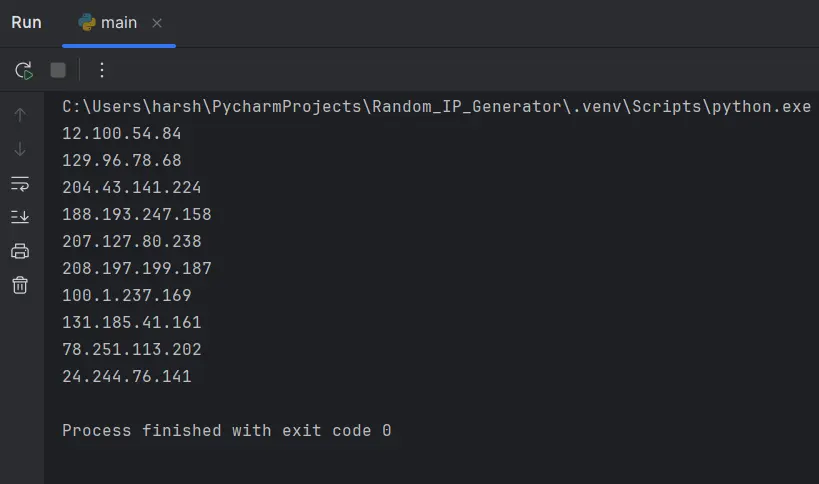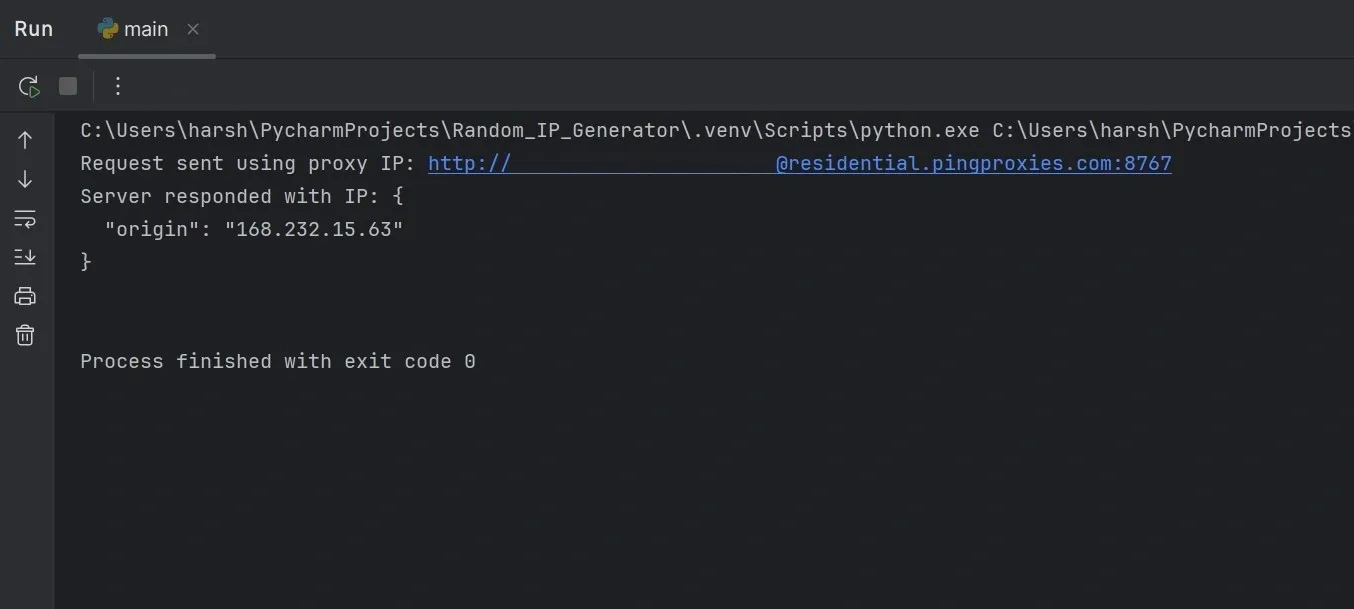How to Generate Random IP Addresses: The Right Way in 2025

Trying to access a large pool of valid-looking IP addresses, so you can make the requests appear as if they are coming from different sources? If so, then generating random IP addresses and using them with routing techniques is the best way to do it.
They can be used to simulate different users, trigger network behaviors, and even prepare systems for real-world conditions. But, there’s a catch. Generating an IP address is not the same as actually using it. Without an understanding of what makes an IP valid, you’re likely to run into blocks, errors, or unintended behavior.
Hence, we made this guide just for that. It walks you through what random IPs are, how to generate them, and how to use them. We’ve also included common misconceptions, alternative methods to get random IP addresses, and best practices, so you’re all covered.
What Randomizing IPs Solves and Why It’s Used?
An IP address plays a key role in handling requests. It tells a server where the request came from, where to send the response, and whether that source should be trusted, limited, or blocked.
However, sending multiple requests through a single IP creates a pattern. Such patterns are instantly recognized for their repetitive behaviour. This is where randomizing IP addresses comes in handy. It changes the source of the IP address across requests to reduce detection and help mimic traffic patterns.
Here’s where it makes a difference:
- Prevents scraping scripts from being blocked after a few repeated requests.
- Helps automation tools appear as if they're running across different users or devices.
- Allows load tests to simulate traffic from thousands of virtual users.
- Let's developers test how applications respond to traffic from different geolocations.
- Avoids rate limits by distributing requests across multiple IP sources.
Apart from these, randomizing IPs can also be useful in security testing, server behavior analysis, and in other simulation scenarios. To put it simply, it all depends on what you're building and how the system you're targeting treats incoming requests.
What Makes an IP Address Valid or Invalid?
Just because an IP address looks correct, that doesn’t mean it's valid. A valid IPv4 address consists of four numbers (called octets) separated by periods. Each octet can be between 0 and 255.
However, if you look at the IP addresses 127.0.0.1 or 192.168.1.1, they fit the IPv4 format but cannot be used. But how can you find and avoid using an invalid IP to avoid breaking scripts or blocking requests?
Reserved IP Ranges You Should Avoid
Reserved IP ranges are blocks of addresses set aside for internal use. As they aren’t routable, you can’t use them on the public internet. Here’s a quick reference table of the ranges you should avoid while generating random IP addresses:
| CIDR Block | IP Range | Purpose (Why You Should Avoid It) |
|---|---|---|
| 0.0.0.0/8 | 0.0.0.0 – 0.255.255.255 | Used to refer to the local machine or the entire network |
| 10.0.0.0/8 | 10.0.0.0 – 10.255.255.255 | Reserved for private networks like LANs |
| 100.64.0.0/10 | 100.64.0.0 – 100.127.255.255 | Shared space between ISPs and customer equipment |
| 127.0.0.0/8 | 127.0.0.0 – 127.255.255.255 | Loopback addresses for testing on your own machine |
| 169.254.0.0/16 | 169.254.0.0 – 169.254.255.255 | Auto-assigned when DHCP fails, no internet access |
| 172.16.0.0/12 | 172.16.0.0 – 172.31.255.255 | Another private IP range used inside organizations |
| 192.0.2.0/24 | 192.0.2.0 – 192.0.2.255 | Reserved for documentation and example code |
| 192.168.0.0/16 | 192.168.0.0 – 192.168.255.255 | Common home and office networks |
| 198.51.100.0/24 | 198.51.100.0 – 198.51.100.255 | Another range for documentation only |
| 203.0.113.0/24 | 203.0.113.0 – 203.0.113.255 | Same as above, not routable on the internet |
| 224.0.0.0/4 | 224.0.0.0 – 239.255.255.255 |
Used for multicast, not regular traffic |
| 240.0.0.0/4 | 240.0.0.0 – 255.255.255.254 | Reserved for future use, not active now |
| 255.255.255.255/32 | 255.255.255.255 | Broadcast to all devices on a network |
What Random Generated IPs Can’t Do?
Random IP generation is often misunderstood, especially when it comes to how the Internet actually routes requests. Before we proceed with generating random IP addresses, it’s important to consider common misconceptions.
- A randomly generated IP is nothing more than a string. It can’t be used to send traffic through the internet, but it can mimic real-world traffic in an application or local network.
- Many assume that using the generated IPs brings in anonymity. Your system’s actual IP is still exposed if you try to communicate with the internet, or it won’t work as your network won’t have the correct routing to match the randomly generated IP addresses.
- As said earlier, not all valid-looking IPs are usable. Some are reserved and private, which can’t be used for routing traffic.
- Pinging the random IP to see if it responds might seem like the quickest way to check. In reality, this can result in hitting unknown or sensitive infrastructure, which can get you in trouble.
Generating Random IP Addresses with Python
Now that you know the essentials about random IP addresses, it's time to move into actual code. The following steps walk you through building a functional IPv4 random IP generator in Python.
Step 1: Build a Basic Random IP Generator
An IPv4 address is made of four octets, each ranging from 0 to 255. Using the function random.randint(), you can create each segment and join them with dots to form a valid-looking IP string.
Output: 229.202.104.198 (Not valid for public routing as it is reserved for multicast traffic)
Step 2: Filter Out Reserved IPs
If you run the above code, you will find that the result can’t filter out private or reserved IP ranges. Since we don’t want the code to generate reserved IPs, the best approach is to use the ipaddress module’s .is_reserved method.
Output: 74.190.183.38 (Valid for public routing)
Step 3: Generate a List of Unique IPs
Adding the above lines to the code gives you a valid IP address for public routing. However, a single IP isn’t enough for most use cases. Hence, you need to create a valid pool of unique, valid IPs.
These three steps create a functional IPv4 random IP generator. If you want to try it yourself, here is the complete code:
Output:

Bonus: Creating an IPv6 Random IP Generator
IPv6 is designed to solve the address exhaustion issue of IPv4. Instead of the familiar four-octet structure, an IPv6 address consists of eight 16-bit blocks. It spans a much wider range, from 0000:0000:0000:0000:0000:0000:0000:0000 to ffff:ffff:ffff:ffff:ffff:ffff:ffff:ffff.
Here’s how to generate a random IPv6 address in Python, while skipping reserved blocks:
Output: 3612:f58d:60c2:6f1:ac36:fa11:ed55:7120 (Valid for public routing)
How To Put Random IP Addresses To Work?
What if we told you that the random IP generator you just built can’t be put to use? Tough truth, but they are limited to simulating or feeding into systems for testing logic, generating mock data, or triggering behavior based on varied IP inputs.
So, how do you generate random IP addresses that can actually route traffic? Reality is that you don’t generate it, but you borrow it. Proxies are the best example of this. Through them, you get real, routable IP addresses that can carry requests, bypass blocks, and rotate identities.
Here’s a basic example of how a rotating proxy can route traffic through different IPs in a Python request.
Output:

Alternative Ways to Get Random IPs
Proxies are the most practical way to work with random IPs. They offer access to real, routable addresses from large rotating pools. If you're targeting automation or data extraction at scale, they are arguably the best.
If it isn’t proxies, how do you get random IPs? Let’s check them out:
- VPNs: Connecting to a VPN routes your traffic through a different server, assigning you a new IP address. While not ideal for automation, VPNs are good for regional access or light testing.
- Tor Network: Tor changes your IP with each new circuit. It’s slower and more privacy-focused, but helpful if you need IP variety without subscribing to a proxy or VPN service.
- Cloud Hosting Providers: Spinning up instances on platforms like AWS, GCP, or Azure can assign you public IPs. This can simulate diverse traffic, though it requires more setup and budget.
- Web Scraping APIs: Some services bundle IP rotation as part of their API. You don’t control the IPs directly, but each request is routed through a randomized pool.
Wrapping Up
To sum up, if you're looking to generate random IPs just to feed test logic or simulate traffic flows, then basic Python scripts or datasets will do the job. But if your goal is to make actual requests from different IPs, you’ll need routing techniques.
As you put these techniques into action, keep a few practices in mind. Always respect the terms of service, rate limits, and usage policies. Also, avoid working with blacklisted IPs which usually come from free solutions or untrusted sources.
We recommend starting small when testing new IP sources until stable, and always going with trusted providers. If you’re working with proxies, residential proxies are ideal when your tasks need high trust and authenticity, while ISP proxies offer better speed and consistency for heavier workloads.
